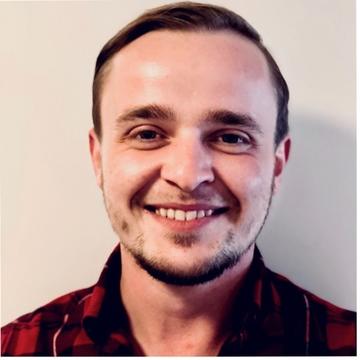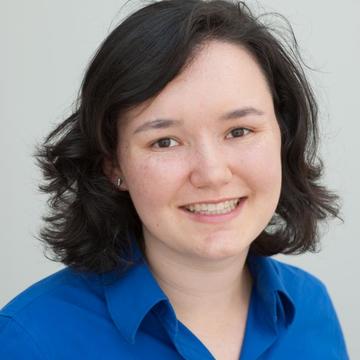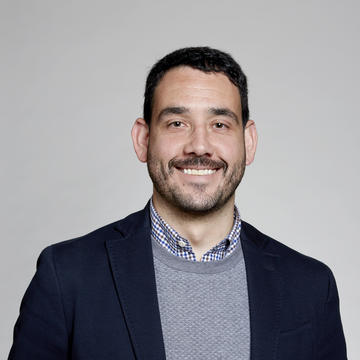Kavli INsD Kickstarts 2023 with Popular 3-Minute Research Presentations to Underpin Inter-Disciplinary Research Culture
Kavli INsD continues to host popular termly '3-minute research presentations' where researchers have the opportunity to share updates on their current research.
The informal event on 3 March 2023 was well attended with interdepartmental researchers gathering to hear about each others work and methods.
Our presenters were:
| Martino Bardelli | Biochemistry |
| Dmitry Zenko | NDCN |
| Alison Farrar | Physics |
| Ricardo Marquez Gomez | DPAG |
| Charles Buchanan |
Chemistry |
|
Finaritra Raoelijaona |
Biochemistry |
The presentations were informative and engaging, highlighting the diverse range of research projects being carried out at the institution. The institution continues to build a strong community through such collaborations, and the 3-minute research presentations serve as an excellent platform for researchers to share their work with the wider community.
We are pleased to share the researcher's presentation summaries below.
Dr Martino Bardelli
Despite extensive efforts, the development of an efficacious vaccine against malaria has proved exceedingly difficult, and innovative intervention strategies are likely to be needed. Blood-stage malaria vaccines aim to reduce mortality, clinical disease, and transmission, whilst potentially also allowing for natural boosting of both vaccine-induced and natural immune responses. However, a significant challenge is the need to induce and maintain the very high levels of antibodies necessary to neutralise the malaria parasite. An alternative approach is to use potent monoclonal antibodies (mAbs) as prophylactics, which would bypass the need for a vaccine to aid in current malaria elimination programmes. Vectored immuno-prophylaxis (VIP) uses viral vectors such as adeno-associated virus (AAV) to deliver mAb-expressing genes, which are expressed in situ following immunisation and released into the plasma. In this study, we deliver potently neutralising mAbs isolated from vaccinated volunteersby VIP in mice, and we achieve durable and high-level serum mAb expression that is strongly inhibitory of parasite growth. This approach, combined with anti-malarial drugs and other control interventions, could provide an effective strategy towards the ambitious objective of malaria eradication.
#vectored immunoprophylaxis (VIP), #AAV, #malaria, #monoclonal antibodies

Dr Dmitry Zenko
My particular interest is the cellular trafficking and aggregation of α-synuclein, a key protein in Parkinson's disease. My postdoctoral research of 4.5 years led to a development of a new tool that allowed our lab to map the key components of α-synuclein degradation pathways as well as helped us understand how we can pharmacologically manipulate the disease causing protein.
#ParksinsonsDisease; #Ubiquitination; #Alpha-synuclein; #Neurodegeneration

Alison Farrar DPhil candidate
Bacteria divide and evolve at staggering time scales, which leads to the development of antibiotic resistance. When their essential biological functions are inhibited by antibiotics, they develop characteristic ribosomal spatial organizations that can be detected with fluorescence microscopy. My work demonstrates these phenotypes in E. coli, using widefield fluorescence microscopy to image ribosome-targeting single-strand DNA probes conjugated to Cyanine 3 and with the DAPI DNA stain. I use images of antibiotic-treated E. coli to train a convolutional neural network to identify the ribosome phenotypes. This neural network can then be applied to images of E. coli from antibiotic-resistant clinical isolates, which should appear more like untreated E. coli. I am also active in public outreach and citizen science efforts, and I developed the Zooniverse project “Infection Inspection” which asks volunteers around the world to classify our images of bacteria as antibiotic-sensitive or resistant. The first stage of this project received more than 240,000 classifications and 1,400 volunteers in the first week, and future stages are in the works!
#Machine learning, #Fluorescence microscopy, #Single-molecule bacteriology

Dr Ricardo Marquez Gomez
I currently have two projects in hand.
The first one is a collaboration with Astra Zeneca, that aims to find drug candidates to alleviate Parkinson’s disease. This work has been carried out in neuronal iPSCs which provide a human-like cell model to study neuronal degeneration. I use high throughput approaches to screen for the best compounds to move from in vitro to in vivo pre-clinical trials.
The second project aims to innovate culture systems to recreate brain circuitry on-a-dish, or what I call, “mini brains”. The aim of developing this is to have a reliable system where we can study neuronal physiology in human-like models and eventually moving it to drug testing systems.
#Electrophysiology, #drug screening, #iPSCs, #circuits, #neurons

Dr Charles Buchanan
NMR can tell beautiful stories about molecular dynamics. My presentation focused on one area where we have made those stories easier to access. Protein-ligand interactions have long been probed by Saturation NMR experiments, but we have recently published the universal Saturation Transfer Analysis (uSTA) workflow, which enables scientists to extract higher fidelity atomic resolution binding information, alongside kinetic information and structural restraints. I spoke about our application of uSTA to probe interactions between cell-surface glycans and the SARS-CoV-2 spike protein, and our conclusion that sialic acid terminated cell-surface glycans bound the original strain, but not the alpha, beta delta and omicron ‘variants of concern’. This raises two questions: why was the glycan binding there in the original variant, and why did it disappear in the VOCs? We are looking to expand this technique to new problems and are looking for collaborators.
#NMR, #Methodology, #Glycobiology



